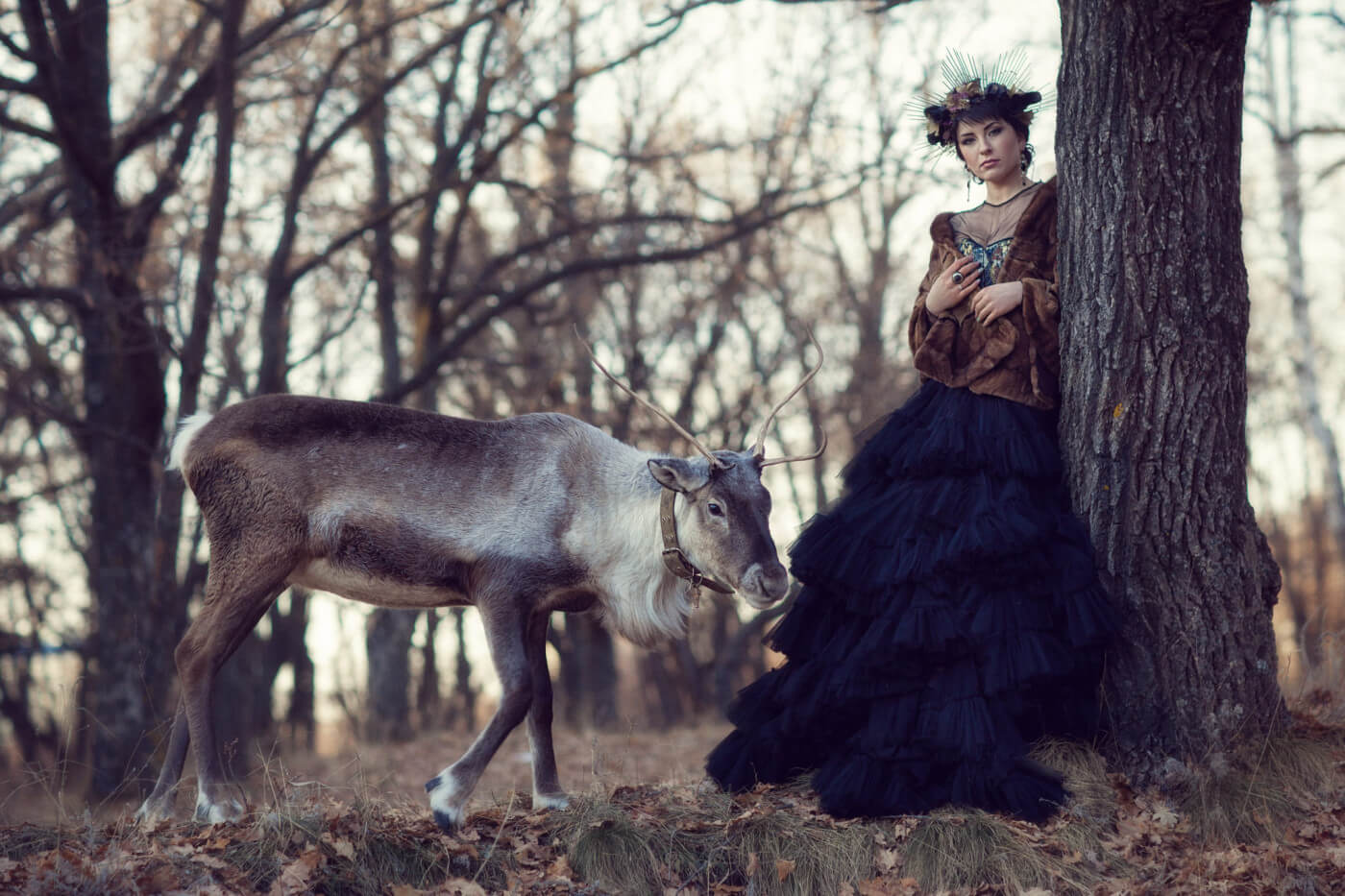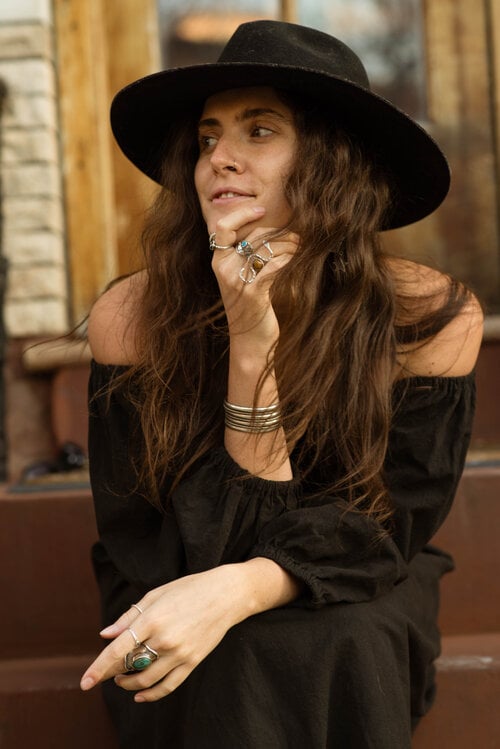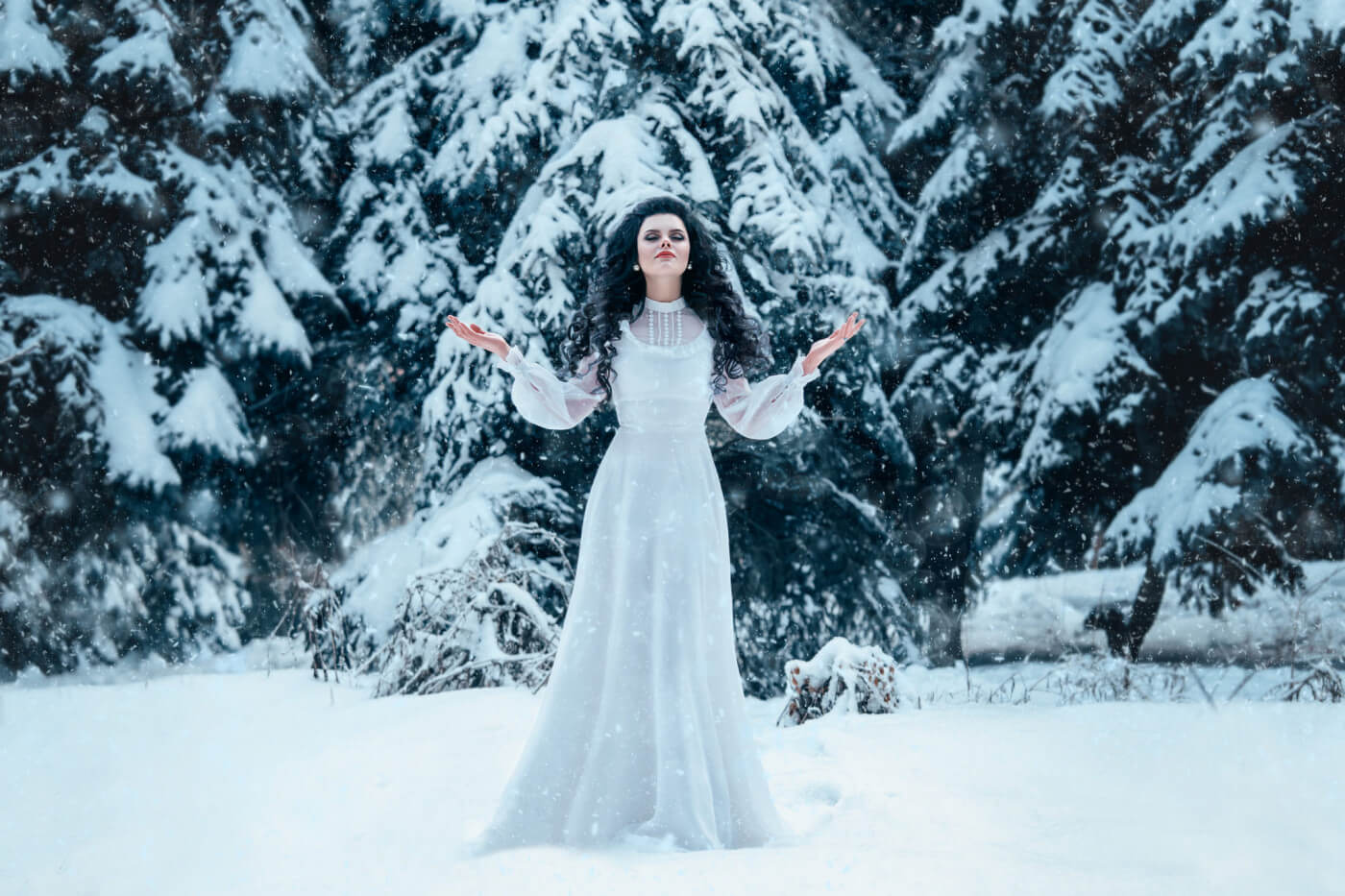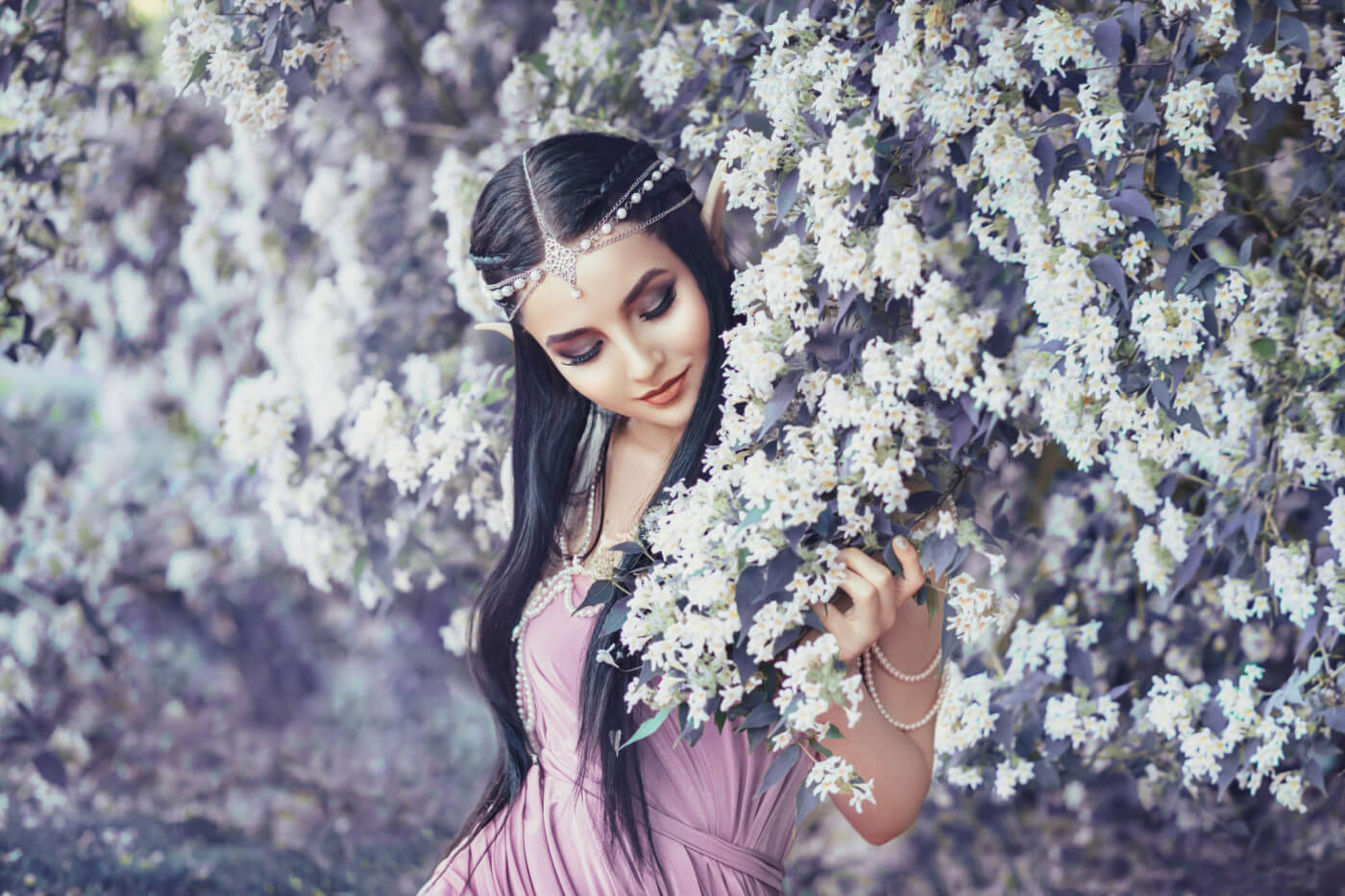The winter is a potent time to connect with our relationship to death, the darkness, shadow, and stillness. Though the nights are long, our inner light guides us like a candle through the dense forest of this season. This forest has many messages and implores us to get curious, become brave, and remember ourselves. As we wander, seek, and uncover, the Goddesses of the winter may arrive to walk beside us.
These Goddesses know that divine destruction and shadow can be the most potent of medicine. And so even in the deep belly of winter, we are not alone, we are weaving.
You may find them and their stories in a palace protected by serpents, at the crossroads, flying across the sky with reindeer, in the sea, or working with the magick of herbs during Yule.
Marzanna
Marzanna is a Slavic Goddess known by many names. Connected with death and winter, Marzanna represents the coming of the darker days and is one of three seasonal sisters representing the cycle of life and death.
Marzanna is also a fate goddess, whose arrival signifies misfortune, a kitchen goddess tending to the hearth, and a goddess who is known for her relationship with what some may call nightmares.
You can find her living in what they call “The Mirror Palace.” Her sacred home is protected by snakes and represents the underworld.
As winter approaches, near the fire, tales are told of Marzanna and the enchanted huntsman. Legend has it that a hunter (sometimes the God of the Sun) falls in love with Marzanna and she traps his soul in a magic mirror where he must spend the long winter.
With Marzanna’s guidance, connect with death in a new way. What is your relationship to death and the underworld?
Hecate is associated with magic, spells, poisonous plants, hellhounds, and Witches.
In some depictions, she can be found single-formed, clad in a long robe, while in other representations she is triple-formed with each of her iterations standing back-to-back.
You will meet Hecate at the crossroads. A symbol of both the liminal and the underworld, this dark goddess carries her lantern and keeps the evil spirits at bay. In the myth of Persephone, Hecate witnesses her descent and goes after her carrying a light through the darkness. If you listen closely, you can hear her pack of hellhounds that are always nearby.
In the heart of winter, Hecate knows the truth. The underworld is just beyond our everyday consciousness, and its spirits wish to have a word with you.
Hecate shows up to teach you about your own inner knowing. Like this powerful goddess, what lantern do you carry with you always?
Rozhanitza
Rozhanitza is a Slavic Winter Goddess associated with the hunt and successful childbirth. The Reindeer symbolically represents her. In modern traditions, we see Reindeer pulling Santa across the sky, however, in this myth, Rozhanitza soars across the night, all while knowing that it is in fact female Reindeer that keep their antlers in winter.
Her feast day is December 26th, and folk art and cookies made in the shape of deer are traditionally crafted for good luck.
If you come face to face with Rozhanitza you will find her, adorned with antlers, often with her daughter, who is a deer herself.
Rozhanitza teaches us that all is not always what it seems. How might you connect with the symbol of the deer? Do you have antlers of your own?
Alcyone
Alcyone is the Thessalian Princess, Greek Goddess of the Moon and the Sea from the tale of Alcyone and Ceyx.
After upsetting Zeus and Hera, Zeus drowned Celyx at sea, and Alycone is transformed into a Kingfisher. According to legend, the Kingfisher female buries her dead mate in the winter before laying her eggs in a nest and setting it adrift in the sea.
Alcyone’s father, the guardian of the winds, forbids the nest to be disturbed and so the water is serene in the days near the winter solstice.
In reality, the Kingfisher does not create nests, and so this story is more of a nod to the changing of seasons.
Alcyone can teach us about grief, renewal, saying goodbye, and honoring the moons and deep waters of the season. Everything in its time.
Alcyone appears to teach about grief. Are you giving yourself the space and support grieving what is lost fully?
Frigg
Frigg is a Norse Goddess associated with spinning, motherhood, and family. Because of her association with Mistletoe and the death of her song, Balder, she is conjured at this time of the year through magickal plants and herbs of Yule.
At the Winter Solstice, Frigg weaves and spins the fate of the year to come. Legend has it that the Christmas wreath itself was adapted from the “Wheel of the Year” which belonged to the Goddess herself and was connected with all of the cyclical rhythms of life.
When Frigg arrives pay attention to what you’re weaving for the year ahead. At the gates of winter, walk through with intention.









